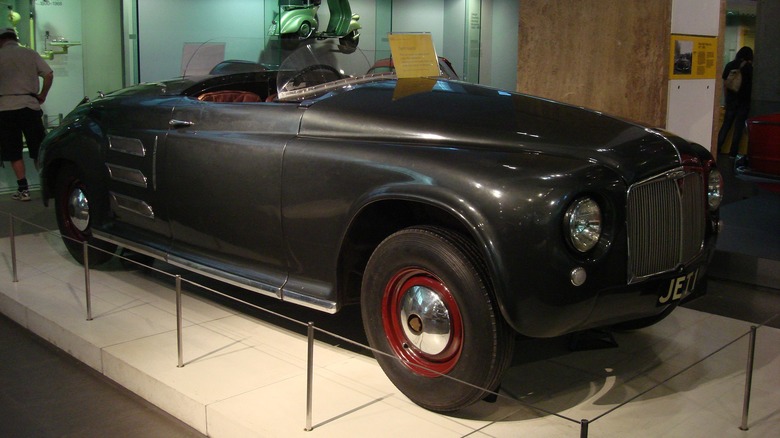The History Of The Rover Jet1: The First Ever Car With A Turbine Engine
World War II was firmly in the rearview mirror in 1946, and a British auto manufacturer started working on the world's first gas turbine-powered car. The company had experience with such engines, having been awarded a contract by the U.K.'s Air Ministry in 1940 to be the primary supplier of the new-fangled jet engine technology (first designed by Frank Whittle) for the British Royal Air Force (RAF).
The Rover Company, which first began making bicycles in Warwickshire, England, in 1885 and would drop the first Land Rover-branded vehicle in '48, ironically never flew a single successful jet engine before the war ended because it kept changing Whittle's designs. Regardless, Whittle's fundamental ideas were sound and laid the groundwork for the new era of jet propulsion that was about to unfold and is still used today.
Rover continued working with the turbine engine, though, seeing it as a viable power source for the future and one that could potentially power automobiles. The advantages of a turbine engine over a standard internal combustion engine (ICE) were obvious. They were lighter than standard automobile engines because they didn't use pistons, had better power-to-weight ratios, and could run on different types of fuel. Yes, it's weird, but certainly not the weirdest engine ever found in a production car.
JET 1 started life as a Rover 75 saloon model. The company then lopped off the roof and fitted it with a two-shaft Rover T.8 gas turbine that pumped out 200 hp at 40,000 compressor rpm. All four wheels were equipped with Girling disc brakes (the prominent brake manufacturer of the day).
[Featured image by Oxyman via Wikimedia Commons | Cropped and scaled | CC BY-SA 3.0]
Hear that whine!
The prototype didn't use a traditional clutch or gearbox because a turbine engine sucks air into the front via a fan, where it's compressed, mixed with fuel, and ignited. That resulting fuel/air mixture shoots out the back of the vehicle as a thrust. With the JET 1, the thrust was "taken directly from the power turbine shaft to the differential rear axle."
It was first revealed in 1950. A few years later, Rover dropped in a bigger engine and broke the world speed record (for gas turbine cars) at 152 mph. JET 1 could run on gas, paraffin, or diesel oil. Still, after conducting extensive test driving, it was soon discovered it used entirely too much fuel (some accounts claim it only averaged five to seven miles per gallon) and responded too slowly during acceleration, thus proving wholly impractical as a passenger vehicle.
Rover continued working with gas turbine cars until 1965 and even created the Rover-BRM Le Mans, which participated in the famous race in 1963. Even Ford experimented with a turbine-powered Thunderbird. The lone JET 1 currently sits in the London Science Museum, where it will reportedly never be operated again (to keep it preserved).
However, at least three working replicas exist, only one using an actual turbine engine. Austrian Georg Meyr-Harting spent 1,000 hours planning and researching and another 2,000 hours making his Rover Jet 1 R (the "R" is for "re-creation"). You can see (and hear) what the JET 1 may have sounded like when in actual operation and can add noise factor to the list of impractical features associated with this turbine-powered car.
